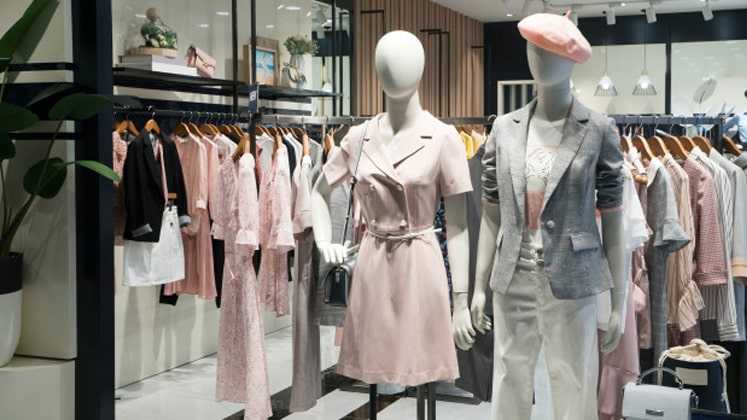
The Istanbul Apparel Exporters’ Association (IHKIB) has more than 9,425 member exporter companies in the apparel field and these companies realise about 75 per cent of Turkish total apparel and 12 per cent of the country’s total export, which is around US $ 17 billion annually. IHKIB feels that the sector’s vertical integration will allow it to gain much prominence in the post-pandemic world.
It points out that vertical integration, a diversified apparel product line and aggressive digitisation across the supply chain, makes Turkey the go-to option for brands across the world. Especially, brands seeking out for quicker lead times as shipping loads are forced to look the Turkey way.
At the 2020 Virtual Apparel Importers Trade & Transportation Conference hosted by the United States Fashion Industry Association (USFIA), Cem Altan , IHKIB reinstated that the competitive advantages Turkey breaks to the table are directly linked to its widely vertical processes. The integration makes the process of manufacturing seamless and allows even its US clients to receive their goods within 6 weeks.
Turkey’s position on the global map
In many cases, Turkish apparel companies not only manufacture, but also design for European buyers and brands. The European companies simply have to choose the design from amongst the list of the manufacturer catalogues. Once the design is chosen, the collection is made. Turkey is not rigid about its production and normally the buyers are allowed to give their suggestions too if need be.
As per reports, 46 per cent European sourcing managers for brands and retailers look at Turkey with lots of hope as they are positive about nearshoring and feel that this trend should increase and improve with time. Today, Europe dominates the buyer share for Turkey and only a small per cent of apparel imports happen from Turkey to the US. However, the tables have turned with COVID and more American brands are coming to Turkey given the positives Turkish manufacturers offer to them. According to the latest reports, global apparel brands based in the US such as Ralph Lauren , Banana Republic and PVH’s Tommy Hilfiger and Calvin Klein , have shifted some of their European production from markets like Portugal over to Turkey.
The Turkish manufacturing industry’s turnaround time and its vertically integrated approach makes it the most-reliable distribution centre for Europe as compared to the larger Southeast Asian counterparts. In fact, with COVID, the attention has shifted more reasonably towards Turkey, because now shipping and logistics is a big headache owing to the global regulations on movement of goods.
Advantage Turkey

Before the pandemic, brands across the apparel landscape the world over were looking to switch to vertically integrated formats for the supply chain to add more ease to their operations. Now, with the pandemic, the necessity has increased further and Turkey is a viable option to either supplement already existing supply chains. Turkey’s vertical model brings all under one roof and that promotes manufacturing ease. With that in mind, product diversification is also a benefit that Turkey can deliver to brands from across the world. In working with its own materials, Turkish factories produce an incredibly wide range of products, including knitted wear, denim, socks, T-shirts and outerwear.
According to IHKIB’s reports, Turkey is one of the biggest knitted goods exporters in the world, with the country being the second-biggest supplier in hosiery and a leader in denim products. This broad array of garments basket actually works in favour of the country and hikes up its sourcing capabilities, pulling the brands from across the globe away from their traditional suppliers to expand into the Turkish soil.
IHKIB in the recent conference also lauded Turkey’s ability to be elastic in its approaches. To justify this statement, the association mentioned that Turkey delivers quality and irrespective of the quantity the buyer intends to put their money on, Turkey is flexible with the production and from small quantities to bulk production, the country can take care of orders with ease. Another big advantage is that Turkish apparel industry, to a greater extent, doesn’t ask customers for long-term production times. This works as a big plus for COVID-strapped apparel companies that are apprehensive about excess orders that don’t make it to their stores and distribution centres.
Stock piling and excess stock has become a big problem especially after the pandemic and brands do not want to carry stocks anymore and want to order only what they can sell. Turkey in this regard is a big hope for brands.
Setting the priorities right
IHKIB includes a large number of priorities, which are promoting Turkey’s apparel manufacturing capabilities worldwide, enhancing the industry’s export capabilities, encouraging educational activities for a qualitative workforce, enhancing the sector’s design capabilities and supporting production and testing infrastructure.
According to the association, Turkish apparel production industry thrives due to its ability to vertically integrate its manufacturing capabilities, whether through growing its own cotton and other raw materials or operating its own farming production. Turkey also imports cotton from the US alongside its home-grown cotton.
The authorities at the IHKIB also mention that before COVID, the negotiations between the buyer and the manufacturer were mostly on the basis of achieving the lowest costs, but now that is shifting toward a desire for affordably priced, yet high-quality goods. The US market represents major growth opportunity for Turkish apparel exports.
Presently, 70 per cent of apparel production from Turkey goes to the European countries, while only 4 per cent goes to the US. But the association is aiming to push further into the US market over the next 5 years, increasing its US $ 700 million earnings to a much higher mark.
Understanding the opportunities awaiting the Turkish apparel industry, the industry is seeking to pull up its socks and get onto the digitisation trend via digital communication and design technologies to address orders in real time.

Post a Comment